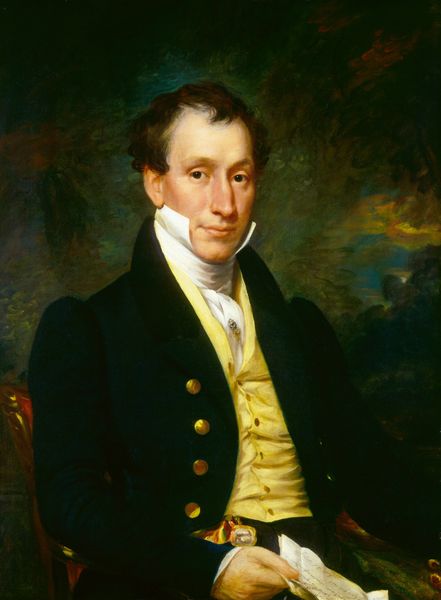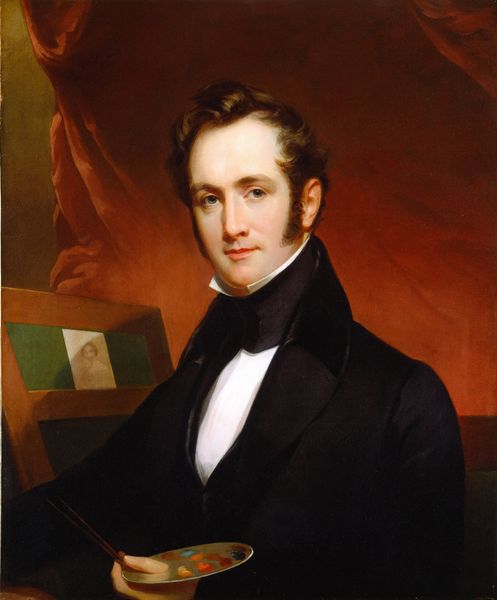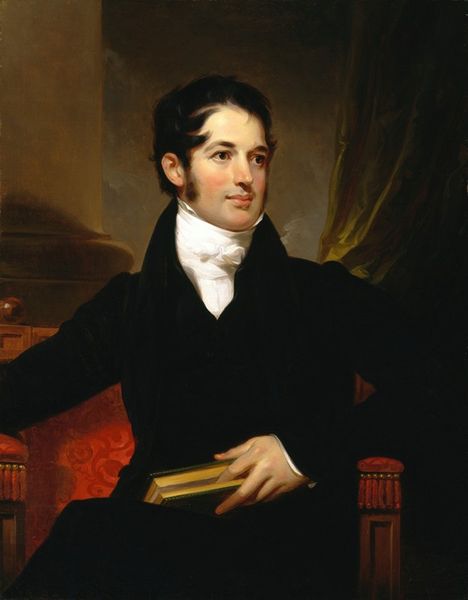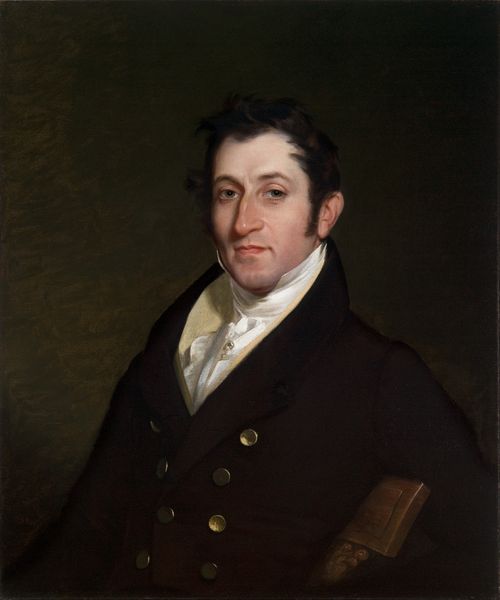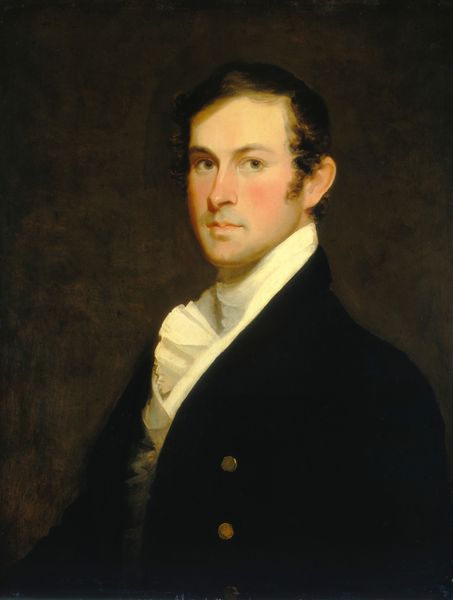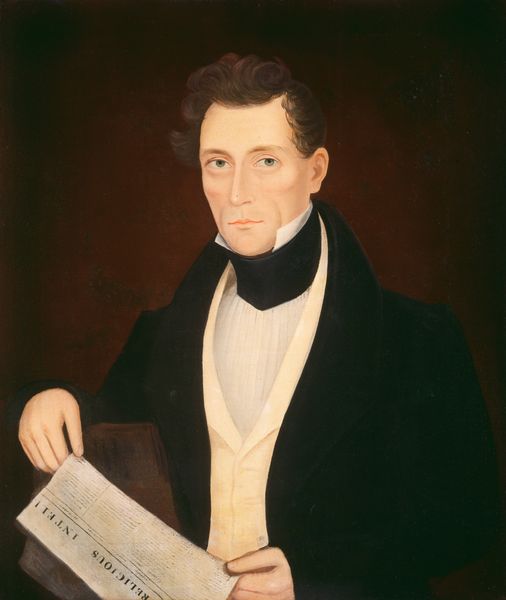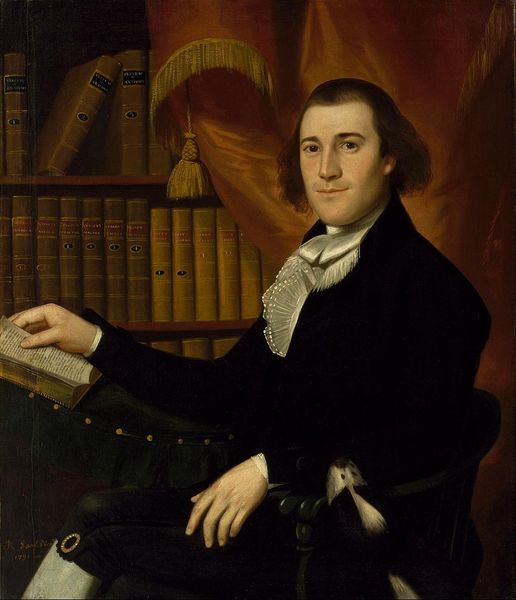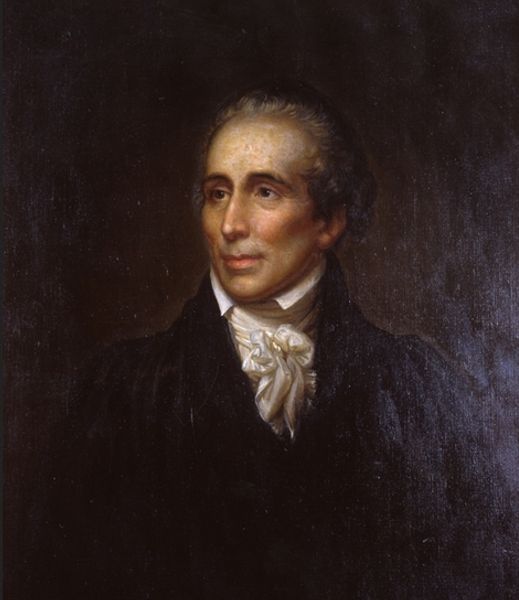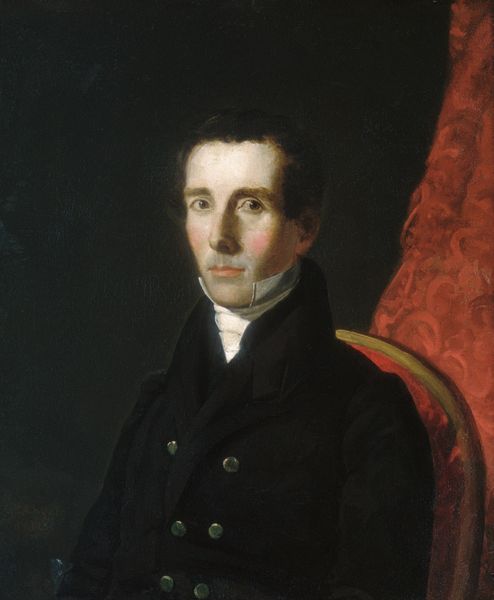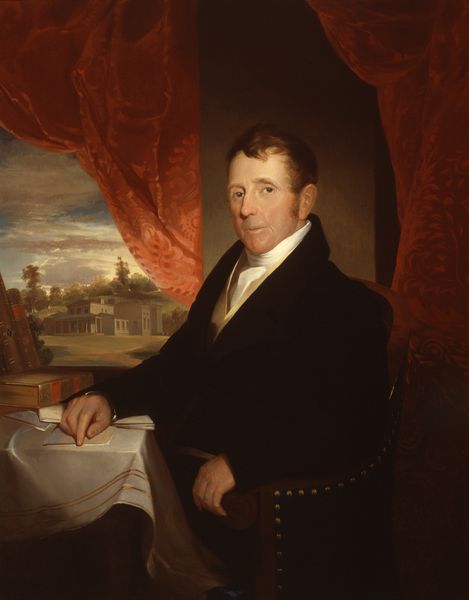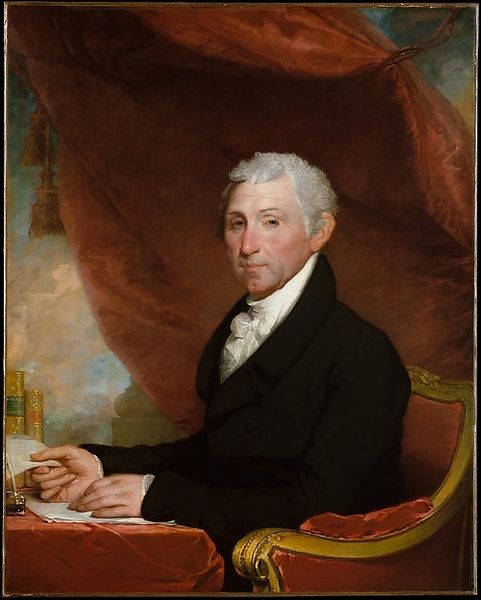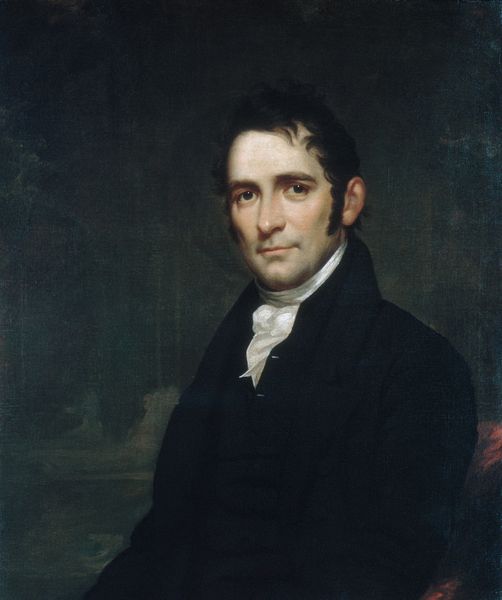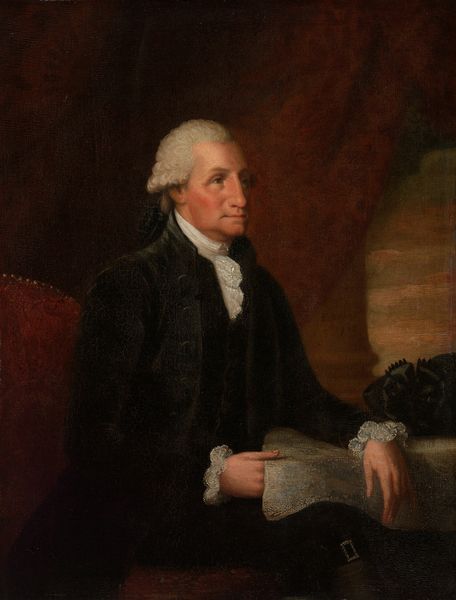
painting, oil-paint
#
portrait
#
neoclacissism
#
painting
#
oil-paint
#
history-painting
#
academic-art
Copyright: Public domain
Curator: This is Samuel Morse's portrait of William Drayton, completed around 1818. What strikes you initially about this painting? Editor: The columns in the background! They evoke the classical world, while Drayton himself looks forward with this compelling seriousness. I wonder about the symbolic contrast. Curator: That neoclassicism, especially in the architecture, certainly situates Drayton within a certain intellectual tradition, Morse uses it to frame him, linking him to Enlightenment ideals and the new Republic. It speaks volumes about how Drayton wished to be perceived. Editor: And perceived, how? The book seems important, yet somewhat obscured. The curtain seems heavy behind him... Curator: Indeed, observe the book's title, what seems to be a treatise. In placing Drayton alongside a tome of knowledge and the pillars of classical learning, Morse is making a claim about Drayton's intellect, and social standing. The red curtain traditionally suggests authority and power. Morse’s strategy for conveying Drayton's standing seems fairly overt here, doesn’t it? Editor: Almost stagey, really. Is it known if Drayton specifically requested such iconography? The academic and slightly aloof style is common, and it makes me question how ‘authentic’ these representations of prominent figures really are. Were these political tools? Curator: Well, this work does date from a period when portraits of public figures were extremely crucial for constructing identities and reinforcing status. We see neoclassicism frequently during this time as the United States tries to build an image and align itself with similar Western European countries in its aspirations. Morse, although recognized today primarily as the inventor of the telegraph, was also a very sought-after portraitist, and a savvy one at that. Editor: The detail in his face compared to the softer treatment of the background is quite striking, it emphasizes his gaze. What I keep thinking about is how art participates in these self-constructed mythologies of men in power. The drape, the columns... everything in service to an ideal, a fiction in some sense. Curator: Exactly, it reveals how historical memory is visually manufactured. And I agree; Drayton's compelling gaze almost commands us to believe in that construction. Thanks, these reflections shed new light for me on this image! Editor: My pleasure! It is always revealing to revisit these paintings with fresh perspective.
Comments
No comments
Be the first to comment and join the conversation on the ultimate creative platform.
